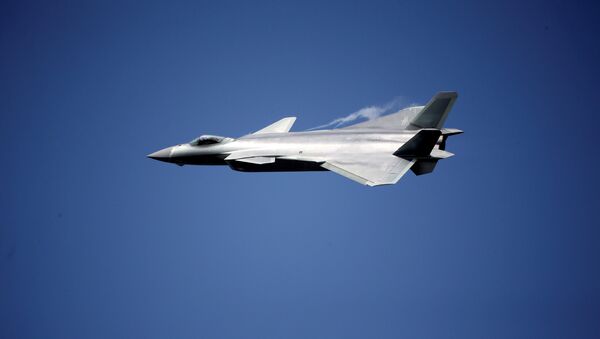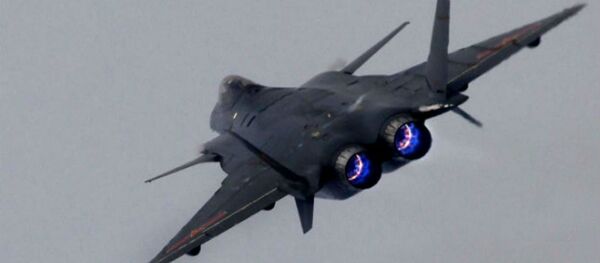Li Li further said that although the American F-22 Raptor is the first fifth-generation fighter commissioned in an air force, its performance is not satisfactory. She said that the J-20 and Russia’s T-50 will possibly manage to break the Western monopoly and that the J-20 could have a more significant influence than its Western counterparts.
Chinese officials maintain that the J-20 will be exclusive to the People’s Liberation Army Air Force.
Although the full specifications of the Chinese fighter are not yet publicly known, some observers expect that the J-20s will be able to match the stealth, radar-evading properties of the Lockheed Martin F-22 Raptor, developed for the US Air Force. The US F-22 stealth fighter is expected to be deployed in the Pacific by the United States.
Earlier last month, the deputy editor of Russian military magazine "Arsenal of the Fatherland" Dmitry Drozdenko told Sputnik that China's J-20 stealth fighter jet also was said to bear similarities to an experimental prototype for a fifth-generation fighter jet produced by Russia's MiG aircraft corporation.
“In my opinion, the machine is based on the Russian MiG 1.44. That plane was created to compete with the PAK FA at the preliminary design stage, and made its maiden flight in 2000. The Chinese plane is very similar. Although it hasn't been announced officially, the J-20 uses our AL-31F engine, developed by Salut, which the Chinese bought for half a billion dollars," he revealed.
Drozdenko is not the first analyst to note the similarity between the MiG 1.44 and the Chengdu J-20, photographs of which began circulating in 2010.
Comparing the two fifth-generation prototypes, Defense Aviation spotted "startling similarities between the Chinese J-20 and the canceled Russian MiG-1.44." As a stealth fighter, the J-20 is not as optimized for combat as the MiG 1.44, but both planes "have similarly styled delta wing canard configurations and a V-Shaped tail section with closely mounted engines," analyst Cavin Dsouza wrote.




